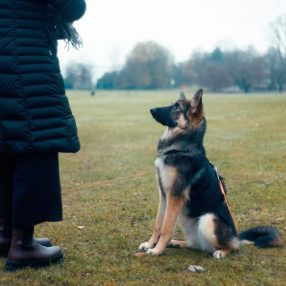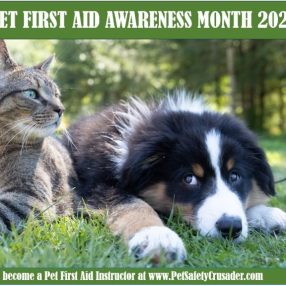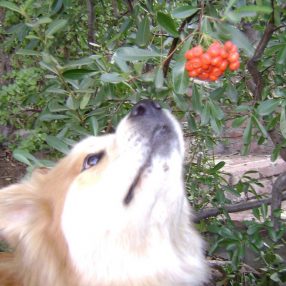 In Water
In Water
Quoting TheDogPress.com from March 25th, 2019…
“It’s not just hunger, being cold, wet, and abandoned, dogs can’t live long without water and in 2019’s record-breaking floods, the flood water is poisonous…In addition to bacteria from so many dead and decaying animals, [it has been reported that as] You get closer to the house and in the water, you can see fuel on top of the water and the dogs are drinking it.”
It had been more than 25 years since parts of the Mississippi River have rose to the levels they were in May 2019, and the flooding is continuing. Bacteria, oil, even sewage can be found in floodwaters. Additionally, the dangers of drowning, electrocution from fallen power lines and potential encounters with predatory animals exist but so do very serious health hazards. The water that builds during severe flooding absorbs its surroundings — bacteria, pesticides, sewage, chemicals and bio-hazards. Remember too, even if pets are only knee-deep in flood water, what isn’t absorbed through the skin will be ingested when they groom. Stomach pain and diarrhea are common symptoms in both pets and people! Having pet-specific shampoo should therefore be an important component in your pet’s first aid and disaster kits.
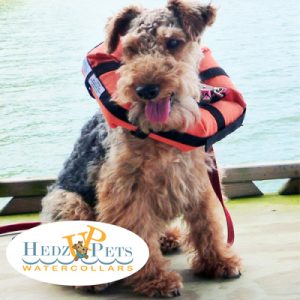 Whether it’s an emergency situation or just plain summertime fun, it’s important to remember that all dogs DO NOT know how to swim! An estimated 10,000 dogs drown each year in the United States mostly because they easily find their way into a pool, but can’t find their way out. Once in the water animals tire while splashing about, so it is crucial they learn how to get out of the water and stay afloat, and that YOU supervise, supervise, supervise! Short-necked breeds like bulldogs and pugs, have a difficult time keeping their heads afloat, and even with a life jacket on, your dog’s face and snout can submerge! That is why The Pet Safety Crusader is a huge fan of the HedzUp Water Collar, and as a student of mine, mention Promo Code: CRUSADER for a 15% discount!
Whether it’s an emergency situation or just plain summertime fun, it’s important to remember that all dogs DO NOT know how to swim! An estimated 10,000 dogs drown each year in the United States mostly because they easily find their way into a pool, but can’t find their way out. Once in the water animals tire while splashing about, so it is crucial they learn how to get out of the water and stay afloat, and that YOU supervise, supervise, supervise! Short-necked breeds like bulldogs and pugs, have a difficult time keeping their heads afloat, and even with a life jacket on, your dog’s face and snout can submerge! That is why The Pet Safety Crusader is a huge fan of the HedzUp Water Collar, and as a student of mine, mention Promo Code: CRUSADER for a 15% discount!
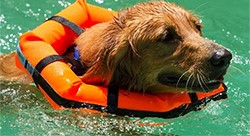

Swimming can be a safe aerobic exercise. The water takes pressure off the joints while allowing your pooch to burn calories. Swimming is also terrific therapy for dogs recovering from surgery or that have arthritis. Whether the body of water is an ocean, lake or pool, the health benefits are great for both you and your dog.
Lessons can build confidence in your dog in a safe environment. Some dogs don’t like getting their paws wet while others aren’t built for water sports.
The short-necked, large-chested breeds Bulldog often has trouble keeping his head above water, but some Retrievers and Spaniels may not initially seem at home in the water and may need practice to perfect their “doggie paddle.”
How do you determine if your dog is a natural born swimmer or not? A telltale sign may be if your pooch uses only his front legs and tries to bring his paws clear out of the water, slapping at it. With a little help from you supporting him under the belly, your dog can begin to also use his hind legs and tail while he paddles.
A few simple rules can make it fun:
- Safety First
Never leave your dog unsupervised around the water. Install a pool fence or safety alarm. Make sure he knows where the steps or ramp are located. Place a large vertical marker that moves (such as a plant or a flag) by the steps so your dog can easily orient himself. Show him the steps and say ‘steps.’ Then place him gently in the water (NEVER throw him in) with his feet on the top step and let him gain his footing. Take him a short distance away and let him swim to the steps, very gradually increasing the distance. Stay in the shallow end, and keep the lessons short – no more than ten minutes. Always maintain control of your dog by using a leash or long line attached to a doggie life jacket or harness.
If you swim in lakes or other natural bodies of water, vaccinate your dog against Giardia which can cause vomiting and diarrhea and can be passed along to you! Avoid water with a strong current, and stay away from boating and fishing areas where your furry friend’s paw may discover a hook or worse. Also watch out for stumps hidden in the water that your dog could dive onto.
Avoid swimming in water over your own head. A panicked pooch may try to “climb aboard” and push you under.
Dogs too can get sunburned, especially around the nose and ears, so talk to your veterinarian about sunscreen and make sure you get your dog to the shade often.
As for meals, since food stays in our dog’s tummies longer than in ours, never do any type of exercise for 1 1/2-2 hours after meal time. This include taking a swim. Not only could he vomit, but the movement on a full stomach could cause life-threatening bloat!
- Ease Him In

Avoid bad experiences. Make sure the water isn’t too cold, and never throw or push your dog into the water. Lure him with a toy or treat on to pool steps or the gradual slope of a lake. Some dogs will wade in as long as they can feel the bottom.
My Chikita (Chow-Akita) Haiku prefers just to sail around the pool in his boat! Pay attention and go your dog’s speed. Just like us, they learn by example, but also just like us…if they have a bad first experience, it’s so much harder to attempt a second!
- Take a Break
Some eager-to-please dogs won’t stop. If your dog starts breathing heavily or if his back end begins to sag in the water, get out and take a rest.
- Rinse Off

Chlorine can irritate skin and eyes while bacteria from lakes can make your pet sick. After swimming, rinse or shampoo your dog’s coat, and make sure you dry out his ears.
- Have Fun
Although dogs generally want to please us, you’ll know if your dog is truly enjoying the water. Every sport is not for everyone or every dog! Wading in the kiddie pool may be more his speed or he just may be a land-lover at heart, but if your dog is having fun…you will too!
Once he knows how to say afloat and how to get out of the water, there are many other fun activities you can do with your canine buddy: Canoe paddling, dock diving, retrieving contests and even team swims await you and your four-legged Michael Phelps or Amanda Beard.
Not Enough Water
365 days a year (sometimes 366), it is vital that you keep pets well-hydrated as H2O just may be the MOST important nutrient, but for sure it is one of the six essential nutrients dogs and cats need to survive! That’s because, like us, our pets are close to 80% water, so they need a regular supply. In case you’re taking notes, the other five essential nutrients your furry best pal needs to grow healthy and strong include proteins, fats, omega 3 and 6 fatty acids, carbohydrates and vitamins.
Around the time people started growing crops, scientists believe felis catis moved into close proximity to hunt mice that were drawn to our grain stores. Elizabeth J. Colleran, DVM/MS and Feline Diplomate in Chico, California explains, “Cats obtained a large percentage of the moisture they needed from mice who [also] are 70-80% water. As a result, they don’t have as much of a ‘thirst’ center in their brain,” since their ancestors pretty much consumed all the water required from their diet. “Along came humans,” who probably didn’t care for their furry family members dining on rodents, and “who decide convenience is important so create [dry] cat food containing only 8-10% moisture,” laments Colleran. Unless the cat in your care drinks from her water bowl, you can see there is a deficiency you need to make up for.
On the other claw, canned diets typically are ¾ water, so cats consistently ingesting this type of nutrition could meet most of their water requirements through food alone. Soft canned diets alone, with nothing to clean the teeth and gums can contribute to poor oral health, so diligently provide kitty with regular dental care.
Canine familiaris however, domesticated 10,000 or more years ago, drinks voraciously by most accounts. It’s important however, to be sure dogs don’t “tank up” when over-heated as they will most likely regurgitate and can aspirate into their lungs. Keep them well-hydrated at all times, giving small amounts of water on hikes as you go.
You Can Lead a Cat to Water, but…
Many of our feline friends are fascinated by water – dripping from a faucet, swirling down the toilet or basin, skimming over rocks in a fountain or stream, but making her drink may be another thing altogether.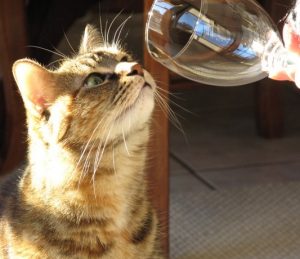
The weaning process for kittens isn’t just about learning to eat nutritious wet and dry food. It is also about the introduction of drinking H2O. Once kits are no longer consuming mom’s milk (4-6 weeks of age), it is vital that fresh clean water is plentiful for lapping, preferably from a shallow bowl. Some kittens have been known to splash about during their initial attempts, and a few even have sneezing fits, so help yourself stay neat and clean by placing a mat or paper towels under the bowl, but just keep it filled.
If your adult cat isn’t drinking, you might have to outsmart her. Liz Bales, VMD, Red Lion Veterinary Hospital in New Castle Delaware explains, “Cats are likely to drink more water if it is placed in a separate location from their food. I have recommended this to many clients who have reported noting a significant increase in water intake when they move their cat’s bowl.”
Dr. Colleran adds, “Bowls should be wide enough for cats to drink without their whiskers touching the edges. Pay attention to the shape cats will drink out of willingly and replicate that elsewhere.” Some may like your china tea cup or coffee mug while others will prefer a taller high-ball glass! “Don’t ever force cats to share water resources,” cautions Colleran. If you have a clowder, there should be plenty of water-filled reservoirs to go around.
If your four-clawed pal is still finicky, try bottled or filtered water. Tap water often has too high a concentration of minerals, including chlorine and she may not like the taste. Who could blame her?
Water fountains can be found in pet stores and online and have coerced many a feline to partake. Just clean them regularly, even all the small parts, to keep your cat’s water source bacteria-free!
Another trick? Try tuna water (what you pour from the can), low-sodium chicken broth or even clam juice. Feed it to your cat straight up or freeze it into ice cubes for a refreshing treat during the cooler parts of the year.
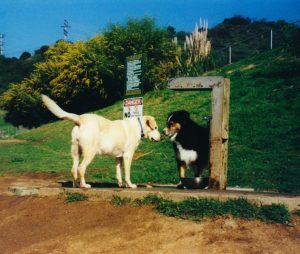 How much water is enough?
How much water is enough?
Consistent output (of urine that is) is a good indicator of normal water consumption. Judging just how much water your cat or dog drinks is a more difficult feat than determining the amount of food consumed as water spills, evaporates and some of your feline’s daily quota may be gotten from a bathroom faucet or fountain. Multiple-pet households makes calculations even more difficult.
Small dogs require 2 quarts a day while a large dog may drink a gallon or more. On average, cats eating a primarily dry kibble-type diet should drink noticeably more water than cats eating a wet food – makes sense. “Hydration needs depend on an individual cat’s metabolism, daily activity, ambient temperature and humidity. In general, the numbers commonly cited range from 45-60ml/kg/day, so a good rule of thumb,” Bales suggests, “is a cup to a cup and half per day per cat.” Having developed the NoBowl Feeding System™ for cats, veterinarian Bales states, “Stress from indoor lifestyles is showing to be more concerning than food type. Current research suggests that how you feed your cat is just as important as what you feed your cat.” That is why she has created a way to feed that gives cats back the opportunity to hunt (on our terms, since we fill her device with food of our choice), exercise, maintain a healthy weight and enrich their indoor environment.
Dehydration clues in the Litter Box & Backyard
Observing pets for changes in their drinking behavior is a PURRfect start. It is in fact First-Aid 101 as knowing what is normal more quickly helps you determine when something is not! Knowing how often and how much urine a cat produces daily can clue you in to potential problems. Clumping litter makes it easy to know the number and size of urinations while other types of litter will require you to count the number and size of wet spots before you scoop or stir. On average, cats produce 2-3 handful-size urine balls daily. Cats are creatures of habit, so even in a multi-feline household, with a little observation on your part, you can likely determine which cat pees in which area of which box. The take away here is to scoop at least once daily and be observant to all and any changes. With your dog, that means paying attention and not being on your cell phone so that you can watch for squats or leg raises and take note of the color.
“Cats are very opaque about illness,” says Colleran. “They don’t demonstrate obvious symptoms so we need to look for what is different about this cat at this time. If the cat is producing smaller “balls” of clumped urine in the litter box or much larger ones than is normal for her, there may be a significant health problem.”
It’s also important to pay attention to the poop. Notice color, consistency and shape. Most adult cats defecate once every 24-36 hours while dogs about twice a day. Spying feces resembling a Tootsie Roll candy (Did I just ruin that childhood pleasure for you?) is a good thing! Dark brown in color, well-formed and moist enough that litter or dirt will stick to it. Odor? Well, eh yes, but it shouldn’t be so bad that you run away screaming.
First-Aid
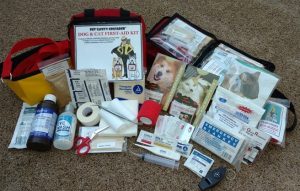
Additional signs that your pet may not be consuming enough water and warrant a veterinary visit include:
- Lack of elasticity in the skin (remains tented when gently pinched at nape of the neck)
- Dry flaky skin
- Increased thirst and/or urination
- Decreased urination
- Urination in inappropriate places (may not be able to reach the litter box or outdoors if need is urgent)
- Bad breath
- Sunken eyes
- Lack of appetite
- Increased heart rate
- Depression or lethargy
All of the above signs could mean something is ‘not-quite-right’ but can point to a number of causes. Only your veterinary professional knows for sure, but taking a Pet First-Aid Class could help you spot trouble!
How much water is too much?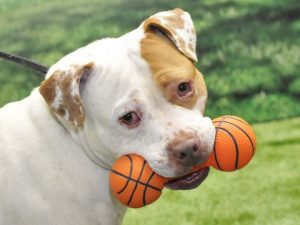
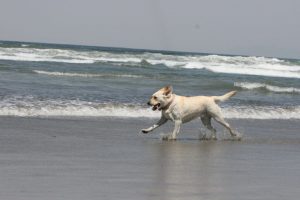
WATER TOXICITY (Hyponatremia) occurs when dogs that repeatedly dive into water with their mouths open trying to catch a ball can and ingest larger quantities of water than you might suspect. Drinking too much causes electrolyte levels to drop, thins blood plasma and leads to swelling of the brain and other organs. Running/hiking dogs may tank up on too much fluids as well. This electrolyte imbalance can be fatal, so as mentioned above, give small rest breaks allowing pet’s respiration to achieve normalcy in a shady environment before consuming fluids. Also give pets a time-out from the water frequently.
Should you notice any of the following, get to your veterinarian at once! Sodium needs to be added slowly and in the correct proportions, which should only be done under proper medical care…
• Lack of coordination
• Nausea/vomiting
• Lethargy
• Bloating
• Dilated pupils, glazed eyes
• Pale gums
• Excessive salivation
• Difficulty breathing
• Collapse
• Loss of consciousness
• Seizures
Drinking too much or too little could indicate urinary tract issues, tape worms, diabetes mellitus or hyperthyroidism. Many elderly pets develop a condition which causes their kidneys to function less efficiently. By making sure young animals don’t stress their kidneys by drinking too little water you just might help preserve their kidneys for a longer lifetime.


